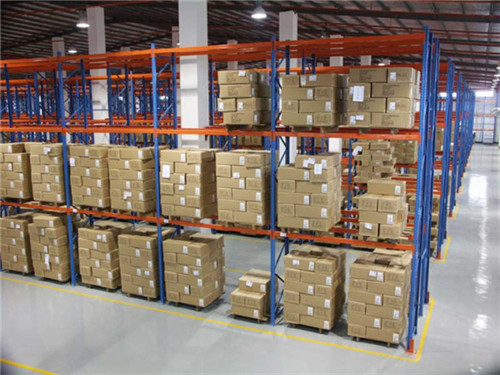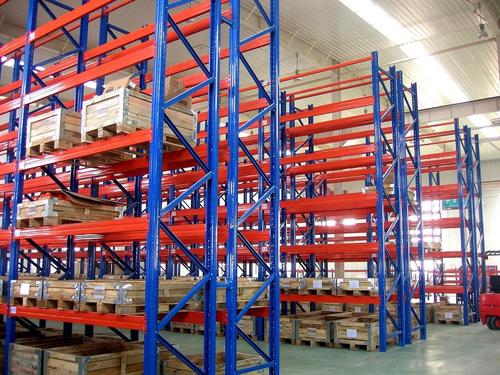Let’s cut to the chase: warehouse space is expensive, and running out of it sucks. You’re staring at towering stacks of pallets, crates eating up your floor, and that forklift dance getting riskier by the minute. Relocating? Brutally expensive. Building out? Permitting nightmares. Enter the Heavy Duty Mezzanine – a legit second floor inside your existing building. But is it worth your hard-earned capital? Buckle up; we’re diving deep into the ROI of industrial mezzanine floors.
What Exactly IS a Heavy Duty Mezzanine? (It’s Not Your Grandma’s Loft)
Forget flimsy storage platforms. A true Heavy Duty Mezzanine is engineered for serious business. Think:
- Massive Load Ratings: We’re talking 500 lbs/sq ft, 1,000 lbs/sq ft, even more. These handle pallet jacks, forklifts (yep, up there), racks loaded with steel parts, or industrial machinery.
- Industrial-Grade Construction: Hot-rolled steel frames, thick decking (often bar grating or heavy-duty plywood topped with steel), and rigorous engineering to meet local building codes (like IBC in the US) and OSHA safety standards.
- Customizable Beast: Need conveyor pass-throughs? Staircases, safety gates, pallet gates, integrated lighting, fire sprinklers? A proper Heavy Duty Mezzanine is built to your specs, not some off-the-shelf kit.

The "Why Bother?" Factor: When a Heavy Duty Mezzanine Makes Killer Sense
So, when does this investment actually pay off? Here’s the sweet spot:
- Your Rent is Skyrocketing (Or You Literally Can't Find More Space):The Math: Calculate your cost per square foot for new leased/owned space (including taxes, utilities, build-out). Now compare it to the cost per added sq ft of a Heavy Duty Mezzanine installed in your current spot. Often, the mezzanine wins by a landslide – you’re leveraging air rights you already pay for.The Reality: "Adding 5,000 sq ft of mezzanine space cost us less than one year of rent would have for an equivalent expansion," says Mike R., an operations manager for a Midwest auto parts distributor.
- Your Workflow is Choked by Congestion:The Bottleneck Breaker: Move slow-moving inventory, packing stations, quality control labs, or even light assembly upstairs. This frees up prime ground-floor real estate for receiving, shipping, and high-turnover picking.The Efficiency Win: Less travel time for workers, smoother material flow, fewer forklift near-misses. "Putting our kitting operation on the Heavy Duty Mezzanine cut our pick/pack time by 22%," shares Lisa T. from an e-commerce fulfillment center.
- You Need to Handle Heavy Stuff… Up High:Beyond Storage: This is where Heavy Duty Mezzanines shine vs. light-duty options. Need to place a parts washer, a compressor, heavy fabrication equipment, or palletized raw materials storage overhead? Only a properly engineered Heavy Duty Mezzanine has the chops.Material Flow Magic: Integrate conveyors running from the mezzanine to ground level, or use pallet lifts for seamless vertical movement of heavy loads.
- You Need Flexibility & Future-Proofing:Reconfigurable: Unlike a permanent building addition, quality Heavy Duty Mezzanines can often be disassembled, reconfigured, or even relocated if your needs change down the road.Scalable: Start with one section and add on later as your business grows, often with minimal disruption.
The Flip Side: When a Heavy Duty Mezzanine Might NOT Be Your Jam
Let's be real; it’s not magic pixie dust. Think twice if:
- Your Ceilings Are Low: You need significant clear height – typically 15 feet minimum after the mezzanine is installed – to make it functional and not feel like a dungeon. Don’t forget space for sprinklers, lights, ductwork!
- Your Building Can’t Handle It (Structurally): Those massive loads have to go somewhere – down through the columns to your floor slab. An old building or questionable slab strength might need expensive reinforcement first. A professional load analysis is non-negotiable.
- Your Budget is Razor Thin (and Cash Flow is Tight): While the ROI is often excellent, the upfront cost is real. High-quality Heavy Duty Mezzanines are a capital investment. If you absolutely can't secure financing or spare the cash, it might be a stretch.
- Permits Scare You Off: Yes, you’ll likely need building permits. A reputable Heavy Duty Mezzanine supplier handles this, but it adds time. If you need space yesterday, it might not be the fastest solution (though often faster than new construction!).
Crunching the Numbers: Is the ROI There?
This is where you grab the coffee. Consider:
- Hard Costs:Mezzanine structure, decking, stairs, safety systems (gates, handrails).Professional engineering & permitting fees.Installation labor.Any building modifications (sprinklers, lighting, HVAC ductwork, floor slab reinforcement).
- Soft Costs:Potential downtime during installation (minimize with good planning!).Internal project management time.
- Savings & Gains:Cost Avoidance: Savings vs. leasing/buying more space (calculate over 5-10 years!).Operational Efficiency: Reduced labor costs, faster throughput, fewer errors.Improved Safety: Less clutter below, designated work areas.Preserved Expansion Potential: Keeps your main floor open for core operations.Potential Property Value Increase: Added functional square footage.
The Bottom-Line Question: Does the total value of savings and gains over, say, 5-7 years significantly exceed the total installed cost? For most businesses hitting the sweet spots above, the answer is a resounding "Heck Yes!".

Getting it Right: Your Heavy Duty Mezzanine Checklist
Don't wing this. Protect your investment:
- Partner with EXPERTS: Choose a supplier specializing in true Heavy Duty Mezzanines, not just light storage racks. Look for deep engineering expertise and a portfolio of industrial projects.
- Demand a Site Visit & Engineering Analysis: No reputable company quotes blind. They MUST assess your building structure, slab strength, clear heights, and operational needs.
- Prioritize Safety & Compliance: Insist on designs meeting IBC, OSHA, and local codes. Safety features (guardrails, toe kicks, gates) aren't optional extras.
- Think Long-Term: How might your needs change? Discuss modularity and future expansion potential during design.
- Get Multiple Detailed Quotes: Compare apples to apples – specs, materials, engineering scope, installation, lead times.
- Plan the Logistics: How will materials get in? Where will staging happen? Minimize disruption to your daily grind.
Beyond Storage: Clever Uses for Heavy Duty Mezzanines
Think outside the pallet rack:
- Manufacturing: Overhead conveyor feed lines, QC labs, tool cribs, maintenance platforms.
- Distribution: Value-added services (kitting, labeling), returns processing, office space overlooking the floor.
- Automotive: Parts storage, work bays for larger vehicles, detailing stations.
- Retail Backrooms: Overflow seasonal storage, e-commerce fulfillment hubs.
- Workshops: Lumber storage, dedicated welding bays, equipment platforms.
The Verdict: Is a Heavy Duty Mezzanine Worth It?
For businesses drowning in inventory, constrained by floor space, or needing to optimize a chaotic workflow – especially those dealing with heavy loads or machinery – a Heavy Duty Mezzanine isn't just worth considering, it's often the smartest financial and operational move on the table.
The upfront cost demands respect, but the long-term payoff – in saved rent, boosted efficiency, enhanced safety, and preserved flexibility – is where this investment truly flexes its muscle. It’s about leveraging your existing assets (that vertical airspace!) to its absolute max.
If your numbers pencil out and your building can handle it, a Heavy Duty Mezzanine isn't just an expense; it's a strategic upgrade that fuels growth without the headaches of moving or major construction. Time to start thinking vertically!
Ready to explore if a Heavy Duty Mezzanine fits your operation? Get quotes from reputable industrial suppliers and run your own ROI numbers – that second floor might be closer than you think.


 Wechat
Wechat
 Whatsapp
Whatsapp